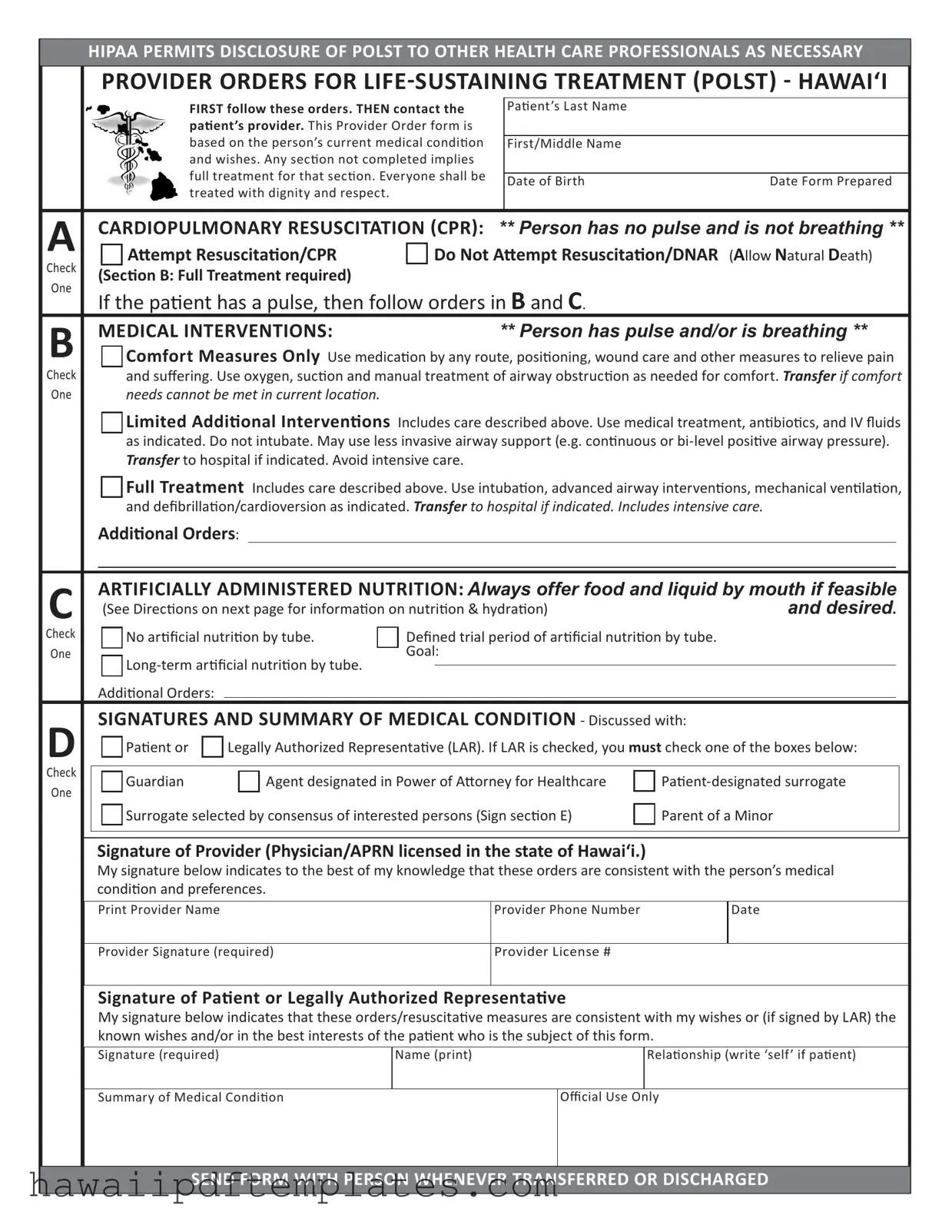Hawaii Polst PDF Form
The Provider Orders for Life-Sustaining Treatment (POLST) form is a crucial document in Hawaii that outlines a patient's preferences regarding medical treatment in emergency situations. This form ensures that healthcare providers follow the specific wishes of individuals, particularly those with serious health conditions, regarding life-sustaining measures. By filling out the POLST form, patients can clearly communicate their treatment preferences, ensuring their values and wishes are respected.
Ready to take control of your healthcare decisions? Fill out the POLST form by clicking the button below.
Customize Form Online
